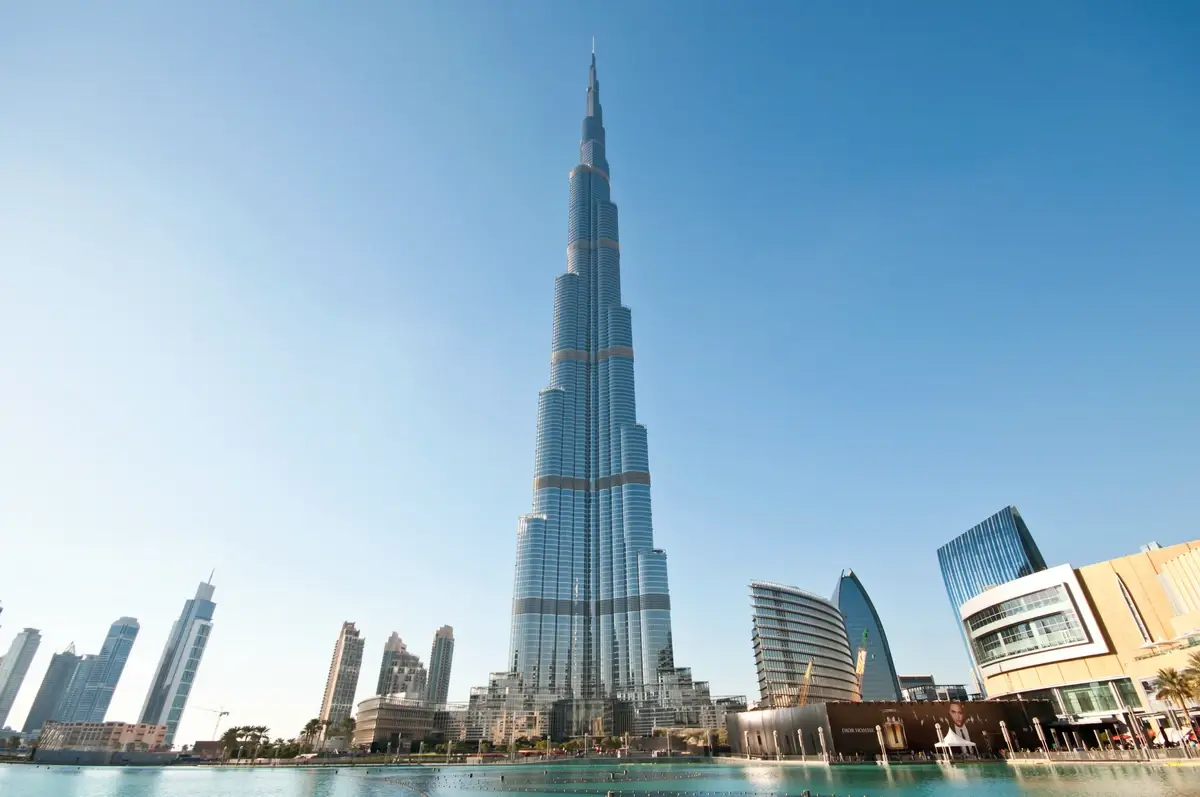Real estate is full of surprises and quirks. Did you know that the Luxor Hotel in Las Vegas has a beam of light visible from space? Or that you can buy a house in Gary, Indiana for just $1? From haunted houses that must be disclosed to million-dollar tree houses, the real estate world is fascinating and diverse.
Whether it’s Tokyo’s quickly depreciating homes or Detroit’s $500 houses, there’s always something unexpected. These fun facts about real estate will give you a new perspective on the properties and markets around us. Dive into these intriguing tidbits and uncover the surprising realities of real estate!
1. Luxor Sky Beam

Image: independent.co.uk
The Luxor Hotel in Las Vegas boasts the world’s strongest beam of light, known as the Luxor Sky Beam. This powerful beam, produced by 39 xenon lamps, has an intensity of 42.3 billion candelas. The light is so strong that it can be seen from up to 275 miles away on a clear night, and it is even visible from space.
Initially, the beam was intended to attract attention to the hotel, but it has since become an iconic feature of the Las Vegas skyline. The beam also creates its own ecosystem, attracting a variety of insects and birds.
2. Haunted House Disclosure Law

The Mercer-Williams House, one of Savannah’s most famous haunted homes. Image: blufftontoday.com
In Savannah, Georgia, there is an intriguing legal requirement: if you sell a house that is reputed to be haunted, you must disclose this to potential buyers. This disclosure law ensures transparency, especially in a city famed for its rich history and numerous haunted houses.
Savannah is renowned for its paranormal activity, with many homes, such as the Mercer-Williams House and the Davenport House, featuring in ghost tours and folklore. This legal requirement is not just a quirk of local law but a reflection of the city’s deep connection with its haunted past. Real estate agents and sellers are obliged to inform buyers about any reputed hauntings, potentially impacting property values and buyer decisions.
3. The Red Paperclip Trade

Image: nbcnews.com
In 2005, Canadian Kyle MacDonald embarked on an extraordinary bartering journey that started with a red paperclip. His goal? To trade up until he acquired a house. The adventure began when he swapped the paperclip for a fish-shaped pen. From there, each trade became progressively more valuable: a hand-sculpted doorknob, a Coleman camp stove, a Honda generator, and so on. The pivotal moment came when MacDonald traded a role in a movie for a house in Kipling, Saskatchewan.
This remarkable feat, completed in 14 trades over the span of a year, has since inspired many and even earned MacDonald a place in the Guinness World Records.
4. Buckingham Palace Rooms

Image: opoyi.com
Buckingham Palace, a symbol of the British monarchy, boasts an impressive 775 rooms, including 78 bathrooms. This architectural marvel, originally constructed in 1703, has served as the official London residence of the UK’s sovereigns since 1837. The palace spans over 830,000 square feet and includes 19 state rooms, 52 royal and guest bedrooms, 92 offices, and a variety of other specialized spaces like a post office, cinema, and swimming pool.
The state rooms, open to the public during certain times of the year, are used for official and ceremonial events. Among them, the Throne Room, with its deep red walls and iconic thrones, stands out as a historic and visually stunning space. Another highlight is the Ballroom, used for state banquets, which features dazzling chandeliers made of 9,000 pieces of crystal.
The intricate design of Buckingham Palace was primarily the work of architect John Nash, commissioned by King George IV. Nash’s designs, rich in detail and grandeur, have made Buckingham Palace a beloved landmark visited by millions of people annually.
5. Sears Tower ZIP Code: 60606

Image: expedia.com
The Sears Tower, now known as the Willis Tower, in Chicago has its own ZIP code: 60606. This unique designation highlights the building’s significance and size. The tower, once the tallest in the world, stands at 1,450 feet and has 110 stories.
The ZIP code 60606 is not just a postal convenience; it symbolizes the building’s role as a major hub in Chicago, housing numerous businesses and offices. The Skydeck on the 103rd floor offers breathtaking views, and on a clear day, visitors can see up to four states.
6. Gary, Indiana’s $1 Homes

Image: abandonedamerica.us
Gary, Indiana offers a unique opportunity to purchase homes for just $1, but with strict conditions. The program, launched in 2013, aims to combat urban blight and boost homeownership. Buyers must renovate the properties within one year and live in them for at least five years.
To qualify, applicants need to meet certain criteria, including a minimum income requirement of $38,750, and demonstrate the financial capacity to complete the renovations, estimated to cost between $20,000 and $30,000.
Only about a dozen homes are sold each year, chosen through a lottery from among qualified applicants.
7. Millennials and Home Buying
Millennials are currently the largest group of home buyers, representing about 38% of the market. This demographic shift highlights a significant trend in the real estate sector. The National Association of Realtors’ 2024 report reveals that younger millennials (ages 25-33) and older millennials (ages 34-43) have overtaken baby boomers, who previously dominated the market. This change is attributed to millennials’ increasing financial stability and the desire for homeownership, driven by low interest rates and the availability of remote work opportunities.
The rise in millennial homebuyers also points to evolving preferences, such as prioritizing location, access to technology, and sustainable living options. Millennials tend to favor urban and suburban areas with robust amenities and good school districts. Despite challenges like student loan debt and rising home prices, millennials are leveraging various financing options and government programs to enter the housing market.
8. Most Expensive Private Residence

Image: mydecorative.com
Antilia, located in Mumbai, India, is the world’s most expensive private residence. Owned by Mukesh Ambani, chairman of Reliance Industries, this 27-story skyscraper costs over $2 billion. The building, designed by Chicago-based architects Perkins and Will, spans 400,000 square feet and boasts amenities such as three helipads, a 168-car garage, a ballroom, and a temple. The structure is built to withstand an earthquake of magnitude 8 on the Richter scale, reflecting both luxury and safety.
The architectural design of Antilia is inspired by the lotus and the sun. Each floor has unique specifications, and no two floors are alike in design or materials used. The opulent interior includes crystal chandeliers, marble floors, and rare materials sourced globally. Antilia is not just a residence but also a symbol of immense wealth and architectural innovation, standing as a prominent feature in Mumbai’s skyline.
9. Prefab Skyscrapers in China

Image: fakt.pl
China has pioneered the construction of skyscrapers using prefabricated sections, dramatically reducing building times. A notable example is the Mini Sky City in Changsha, Hunan Province. Built by Broad Sustainable Building, this 57-story skyscraper was erected in just 19 days. The modular construction method used prefabricated sections manufactured in a factory, allowing for three floors to be assembled each day.
The benefits of this approach include reduced on-site disruption, enhanced quality control, and significant cost savings. By minimizing waste and energy consumption during the construction phase, modular construction is also more environmentally friendly. The Mini Sky City project highlights the potential for efficient and sustainable building practices, offering a glimpse into the future of urban development.
10. Luxurious Tree Houses: Over $300,000

Image: boldtraveller.ca
Treehouses have evolved beyond simple childhood play structures into luxurious retreats costing over $300,000. These high-end treehouses often feature multiple rooms, modern amenities, and high-quality materials. Notable builders like Nelson Treehouse offer custom designs starting at $300,000, incorporating features such as plumbing, electricity, and sophisticated interior designs. The complexity of construction, type of wood, and location accessibility significantly influence costs.
These treehouses are designed to provide a unique and lavish living experience, often nestled in scenic, natural surroundings.
11. Tokyo’s Housing Market
In Tokyo, homes typically lose their value after 20-30 years. This rapid depreciation contrasts sharply with housing markets in other countries, where homes often appreciate over time. The phenomenon is driven by several factors, including cultural preferences for newness, a legacy of post-World War II reconstruction, and economic policies.
Japanese homes are often viewed as disposable, with buyers preferring new construction over existing buildings. This trend is reinforced by the widespread practice of demolishing older homes to build new ones, a process influenced by earthquake regulations and market strategies.
12. World’s Tallest Building

Image: imgix.net
The Burj Khalifa in Dubai, United Arab Emirates, stands as the tallest building in the world. Completed in 2010, this architectural marvel reaches a staggering height of 828 meters (2,717 feet) with 163 floors. Designed by Adrian Smith of Skidmore, Owings & Merrill, the Burj Khalifa holds several world records, including the highest observation deck, located on the 148th floor.
The tower’s construction took six years, involving over 12,000 workers daily during peak periods. Its design draws inspiration from Islamic architecture, with a Y-shaped floor plan to optimize residential and hotel space. The Burj Khalifa uses a bundled tube design to withstand the high winds common in Dubai.
More than just a skyscraper, the Burj Khalifa symbolizes Dubai’s rapid development and ambition. The structure features luxury residences, corporate suites, the Armani Hotel, and the At.mosphere restaurant on the 122nd floor. It also offers the “At the Top” observation decks on the 124th, 125th, and 148th floors, providing breathtaking views of the city and beyond.
13. Illegal to Die in Some Houses
In Falciano del Massico, Italy, it is technically illegal to die because the town lacks a cemetery. This unusual law was enacted in 2012 when the town’s cemetery reached full capacity. The mayor, Giulio Cesare Fava, introduced the ban as a provocative way to highlight the need for cemetery space and to pressure neighboring towns to accommodate their deceased.
Despite the absurdity, the law underscores the practical challenges small towns face with limited resources and space.
14. Moon Land Sales

Image: Wikimedia Commons
Although buying plots of land on the moon is unofficial, it’s an intriguing concept that’s been around for decades. Companies like the Lunar Embassy claim to sell lunar real estate, but these transactions have no legal standing.
The 1967 Outer Space Treaty, signed by 111 countries, states that no country can claim sovereignty over celestial bodies. Thus, any claims to owning lunar land are not recognized by international law. The idea gained popularity in the 1980s when Dennis Hope, founder of the Lunar Embassy, started selling lunar deeds as novelty items.
15. Colored Bathrooms in the Pentagon
During the Pentagon’s construction in the early 1940s, Virginia’s segregation laws required separate bathrooms for Black and white people. Despite President Franklin D. Roosevelt’s Executive Order 8802, which prohibited racial discrimination in federal employment, local authorities insisted on segregation.
As a result, the Pentagon was built with twice as many bathrooms as necessary to comply with these laws. However, when Roosevelt inspected the construction in 1942, he ordered the desegregation of the Pentagon’s facilities. Consequently, the Pentagon became one of the few buildings in Virginia where segregation laws were not enforced, making it an exception in the state.
16. Earthquake-Proof Houses in Japan

Image: bigfoto.name
Japan’s homes are renowned for their earthquake-resistant designs, essential in a country frequently experiencing seismic activity. The building standards, significantly revised after the 1981 Miyagi Prefecture Offshore Earthquake and the 1995 Great Hanshin Earthquake, enforce stringent regulations ensuring structures can withstand significant seismic forces. Modern Japanese buildings utilize technologies like base isolation, which allows for horizontal movement during earthquakes, and vibration control to minimize damage and ensure occupant safety.
New and older buildings alike undergo rigorous safety inspections every ten years to maintain structural integrity. These inspections, along with advanced engineering solutions such as lightweight construction materials and reinforced concrete frames, help ensure that even decades-old buildings meet contemporary safety standards. The Seismic Performance Indication System grades buildings based on their earthquake resilience, promoting transparency and safety in construction.
17. Sagrada Familia’s Long Construction

Image: thesun.co.uk
The Sagrada Familia in Barcelona, designed by Antoni Gaudí, has been under construction since 1882. Initially overseen by Francisco de Paula del Villar, Gaudí took over in 1883, radically transforming the original Neo-Gothic design into a unique structure inspired by nature and religious symbolism.
Despite Gaudí’s death in 1926, only 20% complete, the work continued, interrupted by events like the Spanish Civil War. Modern construction techniques and computer-aided designs have accelerated progress, aiming for completion in 2026.
18. Monopoly Real Estate
The classic board game Monopoly features properties named after real streets in Atlantic City, New Jersey. Created by Charles Darrow during the Great Depression, the game’s streets like Boardwalk, Park Place, and Marvin Gardens reflect actual locations in Atlantic City.
Originally published in 1935, Monopoly’s design was influenced by the city’s vibrant tourism and real estate boom in the early 20th century. The game’s properties offer a snapshot of the era’s urban landscape, making it not only a game but also a historical reference to Atlantic City’s geography and culture .
19. Shortest War Over Real Estate

Image: Wikimedia Commons
The shortest war in history, known as the Anglo-Zanzibar War, occurred on August 27, 1896, and lasted just 38 minutes. The conflict erupted over the real estate of Zanzibar’s palace.
Following the sudden death of Sultan Hamad bin Thuwaini, his cousin Khalid bin Barghash seized power without British approval. The British, aiming to install a compliant ruler, issued an ultimatum for Khalid to step down. When Khalid refused, British forces bombarded the palace at 9 a.m. The shelling ended by 9:40 a.m., with significant damage to the palace and over 500 Zanzibari casualties.
This swift and decisive action made the Anglo-Zanzibar War the shortest recorded war in history.
20. Warren Buffett’s House: A Lesson in Frugality

Warren Buffett’s modest home in Omaha, Nebraska. Image: Wikimedia Commons
Warren Buffett, one of the world’s richest individuals, still lives in the house he bought in 1958 for $31,500. Located in Omaha, Nebraska, this 6,570-square-foot, five-bedroom, 2.5-bathroom home in the Dundee-Happy Hollow Historic District is far from the opulence you might expect from a billionaire. Buffett has often referred to this house as his “third best investment,” attributing its value to the countless memories made there over the decades.
Buffett’s choice to stay in this modest home highlights his frugality and practical approach to life. He once stated, “I’m happy there. I’d move if I thought I’d be happier someplace else.” Despite the potential financial benefits of investing in a larger or more luxurious property, Buffett values the comfort and memories associated with his current home more than material excess.
This house, purchased for $31,500, is now worth around $1.38 million, a substantial increase but still modest compared to his wealth. Buffett’s lifestyle, including his simple home, reflects his philosophy of living well within his means and focusing on long-term value rather than short-term luxury.
FAQ
What is the smallest house in the world?
The smallest house in the world is the “Tiny House,” created by Van Bo Le-Mentzel. Measuring just 1 square meter (10.76 square feet), it is a wooden structure that can be used as a mobile office or shelter. This ultra-compact design emphasizes minimalism and efficient use of space, reflecting the growing interest in tiny living.
Why is real estate two words?
“Real estate” is two words because it combines “real,” meaning actual or physical, and “estate,” referring to land or property. The term originated from the Latin word “res,” meaning “thing,” and “status,” meaning “condition,” evolving in English to describe physical property and land ownership.
What are the three pillars of real estate?
The three pillars of real estate are location, financing, and property management. Location determines the desirability and value of a property. Financing involves securing the necessary funds through loans or investments. Property management includes maintaining and operating the property to ensure it remains a viable investment.
What is the biggest problem in real estate?
The biggest problem in real estate is affordability. Rising property prices, high mortgage rates, and stagnant wages make it difficult for many people to purchase homes. This issue is exacerbated by limited housing supply and increasing demand, particularly in urban areas.
What are some good real estate quotes?
- “The best investment on Earth is earth.” – Louis Glickman
- “Ninety percent of all millionaires become so through owning real estate.” – Andrew Carnegie
- “Real estate cannot be lost or stolen, nor can it be carried away. Purchased with common sense, paid for in full, and managed with reasonable care, it is about the safest investment in the world.” – Franklin D. Roosevelt





